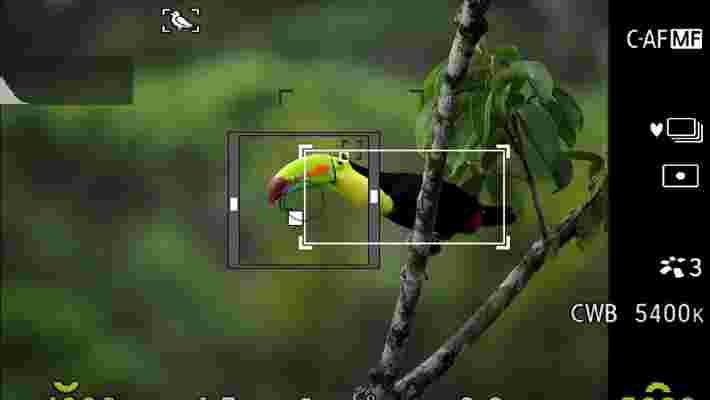Spoilers follow for The Umbrella Academy seasons 1 and 2.
The Umbrella Academy are set to team up with a former enemy, if new season 3 character posters are anything to go by.
To celebrate the superhero TV series' third anniversary on February 15, Netflix released a bunch of new one-sheets on its Umbrella Academy-focused social media accounts. And, after scrolling through them, Netflix has all-but-confirmed that season 2 antagonist Lila Pitts will join the supergroup's ranks in The Umbrella Academy season 3 .
With Ben Hargreeves giving his life (again) to save his siblings in the Netflix show 's second season, there's a vacancy in the usually seven-strong team's line-up. Given that Lila almost joined The Umbrella Academy at the end of season 2, and the fact she has romantic feelings for Diego Hargreeves, it seems logical that she'd eventually team up with them over a common foe.
Check out the brand-new season 3 posters via the Twitter thread below:
Why is Lila joining forces with The Umbrella Academy? Because of The Sparrow Academy, of course.
Based on the talon-like tears in each Umbrella Academy member's, well, umbrella, it's clear that The Sparrows won't see eye-to-eye with their fellow superheroes. We don't think that The Sparrows will be season 3's main villain – we actually expect both groups to join forces by the end of the season – but there'll definitely be competition between them early on. And, given that The Umbrella Academy aren't the most talented, co-ordinated superhero group, we imagine that The Sparrow Academy will have the edge over them in the first half of season 3.
The Umbrella Academy season 3's new posters aren't the only piece of news to emerge ahead of the show's return. Recently, we learned that a Euphoria star had signed on to appear in the series' third season . Meanwhile, a piece of season 3 concept art suggests that this may be the saddest entry in the show yet.
Analysis: is an Umbrella Academy season 3 release date set to be announced?

It's certainly possible. As we mentioned, we know that season 3 will land on Netflix sometime this year. And, judging by recent comments made by one of the show's stars, and Netflix ramping up its marketing campaign for the show's next season, we could hear something very soon.
Let's start with those quotes from star Emmy Raver-Lampman, who plays Alison Hargreeves. Speaking to Collider , Raver-Lampman revealed that there was still plenty of post-production work that needs completing for season 3's arrival. However, Raver-Lampman also expressed her hope that The Umbrella Academy would return to Netflix "this summer", which certainly whipped fans into a frenzy online.
Ordinarily, we wouldn't take such quotes at face value – after all, these are the hopes of one of the show's stars, rather than anything substantial. But, in recent days, Netflix has been making a concerted push to remind people that The Umbrella Academy season 3 is on the way.
As we touched on above, February 15, 2022 marks the third anniversary of Netflix's live-action adaptation of Gerard Way and Garbriel Ba's graphic novel series. To commemorate the occasion, other Netflix-owned social media accounts chimed in with celebratory posts. Netflix Geeked reminded us of how far the supergroup had come over the past two seasons , while the streamer's UK Twitter account doubled down on season 3's forthcoming launch with an "it's coming" tagline as it showed off the new one-sheets.
Curiously, each of the Umbrella Academy member's shadows (on their posters) is set at the 11 o'clock position. If we join the '3' (the number of the show's next season) together with 11, we get 3.11. In US calendar terms, that represents a specific date, March 11.
Could this be the date that we finally get a teaser trailer and a release date announcement? Sure, it's a stretch on our part, but maybe. Traditionally, Netflix doesn't reveal launch dates and trailers for its biggest movies and TV shows until a few months before release. If The Umbrella Academy season 3 is set for a summer 2022 arrival, March 11 seems like a decent fit for some form of announcement.
Let's hope it isn't too long, then, before Netflix officially confirms when The Umbrella Academy season 3 will air.
The Olympus OM-1 won't be the world’s best camera, but it could be the most fun
The last few years have seen a deluge of powerful, full-frame mirrorless cameras that have all largely forgotten about one key spec: fun. Yes, megapixels, dynamic range and video codecs are important; but when all you want is a compact, rain-proof companion to help you take creative in-camera shots, beasts like the excellent Sony A7 IV can feel a bit too serious. For many, they're overkill.
Enter the new OM System 'Olympus' OM-1 . With a 20MP Four Thirds sensor, which is about four times smaller than full-frame, it won't immediately have pro portrait photographers falling off their chairs with excitement. But the OM-1 is the closest thing yet to having smartphone-like fun in a modern, go-anywhere camera.

Like recent smartphones, the OM-1 has a Quad Bayer sensor, IP53-rated weather-proofing and computational photography modes.
That doesn't mean it's quite a Google Pixel 6 Pro in mirrorless camera form. But if, like me, you sometimes feel the mental and physical weight of lugging tripods, ND filters and a Lightroom-equipped laptop on photography jaunts, then it could be the camera for you. In fact, it's the kind of camera launch that I've sorely missed in recent years.
Stacked and racked
So what can the OM-1 do that full-frame cameras struggle with? Its smaller Four Thirds sensor doesn't gather anywhere near as much light as its larger cousins. But, like smartphone sensors, the smaller amount of data it produces means in-camera processing can, to an extent, overcome pesky physics. That's particularly true for the OM-1, because it's the first Micro Four Thirds camera to have a speedy 'stacked' sensor design.
OM Digital, the new owner of Olympus camera tech, says the combination of this new sensor and its TruePic X processor means the OM-1 can squeeze an extra stop of dynamic range, and an extra two stops of noise performance, from a Four Thirds sensor compared to its predecessors. In theory, this could help it approach full-frame image quality.

This is something I'll need to test in the field, and it's likely to work best on relatively still subjects. But that kind of processing isn't the 'fun' factor I'm talking about when it comes to the OM-1.
Its processor might not be in the same ballpark as a Google Tensor or Apple A15 Bionic, but it still has enough grunt and smartphone-like software trickery to pull off some pretty unique photography tricks.
Pixel dust
Olympus was one of the early pioneers of computational photography – around the same time as the Google Pixel 3 came out, it introduced features like Live ND and Handheld High-Res Shot mode on the Olympus E-M1X and E-M1 Mark III (the OM-1's spiritual predecessor).
The OM-1 doesn't introduce any brand-new computational features, but it does improve these and make them more usable. Live ND, which simulates adding a real neutral density filter to your lens, now offers a six-stop ND64 option. That's particularly useful for making flowing water look silky smooth, or creating dramatic movement in clouds.
Another useful mode is Handheld High-Res Shot mode, which lets you shoot 50MP images without a tripod. Because this works by creating a composite from several photos, it improves noise performance by a couple of stops; the only downside is that, just as with smartphones, you have to be careful to avoid movement in your shot.
Apps like Slow Shutter let you create light paintings on your phone, and the OM-1's new handheld Live Composite mode lets you do the same, and can also be used for long exposures of traffic headlights and fireworks. Prefer macro photography? The OM-1 also has in-camera focus stacking, which can combine 15 shots in around five seconds to ensure that everything is in focus. Olympus cameras have also long been astrophotography stalwarts, thanks to modes like Starry Sky AF. The list of fun features goes on.
Focus group
These kinds of features should really be standard in all mirrorless cameras, but not many combine the kind of in-camera processing and stabilization promised by the OM-1. And that's why it's likely to be a particularly enjoyable companion on trips where you want to spend more time outdoors than in an editing wormhole.
Perhaps even more useful are the OM-1's post-shot features. Now that it's able to shoot at a rapid 50fps with autofocus tracking, it's likely that you'll end up with long streams of very similar-looking images. This would ordinarily present a challenge in terms of image management, but OM Digital says its new camera can rank all the photos you've taken in a sequence, according to how in focus they are, and thanks to its Lightroom-compatible star rating system you can get a good head-start on the culling process.

Sony and Canon fans might retort that their system's tracking autofocus is so good that they don't need a system to rank their shots. But it's still good to see phone-style usability come to a camera world that often seems preoccupied with creating menus that have more pages than Infinite Jest.
I'm keen to see if the OM-1's autofocus does live up to OM Digital's claims, given that it's been a slight weakness of Olympus cameras in the past. The raw materials, most notably the Quad Bayer sensor with 1,053 phase-detection AF points, are certainly there though. And the OM-1's combination of seven stops of in-body image stabilization (IBIS) and an IP53-rated weatherproof body should also give it a touch of GoPro-style ruggedness.
Middle child
Of course, the OM System OM-1 won't be the perfect camera for everyone. And if your priorities are maximum resolution, huge dynamic range and unparalleled sharpness, then it won't be the outright 'best' either.
But it does show that crop-sensor cameras still have a place in the space between smartphones and full-frame powerhouses. Smartphones are the pinnacle of point-and-shoot, but using a glass slab with no viewfinder isn't the most enjoyable shooting experience. The latest full-frame cameras, meanwhile, offer exceptional features and performance, but in a package that sometimes feels as complex as an F1 car.
If you fancy shooting some cool photos without packing a tripod, ND filters, or editing tablet, then the OM-1 is shaping up nicely as a powerful middle ground option. Its computational tricks are also, crucially, backed up by specs that address traditional Olympus weaknesses, like poor tracking AF and low-light performance.
There is an argument that its body-only price tag of $2,199 / £1,999 / AU$3,299 puts it in a tricky no-man's land between smartphones and rivals like the Canon EOS R6 . But I'm hoping that its promising features are backed up by real-world performance that gives it a finger-hold in the competitive mirrorless space; whatever your photographic preferences, that would be a great thing for camera choice.
Dragon Age 4 is in 'very good shape' - but won't release this year
Dragon Age 4's development is on schedule but we won't get our hands on the next entry in BioWare's RPG series until at least 2023, according to a new report.
In the latest episode of his GiantBomb video series GrubbSnax (only available for premium members), Grubb claimed that Dragon Age 4 is in "very good shape" according to his sources (via VGC ).
Grubb went on to say that developer BioWare is apparently where it's "supposed to be" in its development cycle for Dragon Age 4 and that the "game is on schedule".
However, it sounds like we won't be getting our hands on the next Dragon Age this year, with the journalist claiming that the game is "still at least 18 months out" and suggesting that we may not get our hands on it until "maybe late 2023" at the earliest.
In addition, Grubb claimed there are no plans to release a Dragon Age remastered edition similar to the Mass Effect Legendary Edition that was released last year. This is would be due to the Dragon Age games not having as much of a thread running through them, at least not to the degree Mass Effect games do.
Analysis: the wait continues

If Grubb's estimation of a 2023 release (at the earliest) is accurate, then Dragon Age 4 will be released almost a decade (if not a decade) after the last entry in the series, Dragon Age: Inquisition, which was released back in 2014. It's no surprise then that Dragon Age fans have been clamoring for details on the series' next entry.
Dragon Age 4 was officially announced during The Game Awards 2018, following years of rumors that a new series entry was in the works. Since the announcement, we've not heard a whole lot about what to expect from our next trip to Thedas, or when it will release. However, BioWare did publish a blog post in late 2021 stating that it was “excited for next year when we can talk more about what we're working on."
That means we can probably expect more solid details on Dragon Age 4 this year, including a release window and official name (it likely won't be called 'Dragon Age 4'). While some smaller details may be shared via blog posts, we imagine the big drops of news will arrive at a big event like EA's annual conference - under either Summer Game Fest or E3 - or at The Game Awards 2022.
If Grubb's claims are accurate then there's still a while to wait before we can play Dragon Age 4 - but hey, what's another year or two wait when we've been waiting this long?